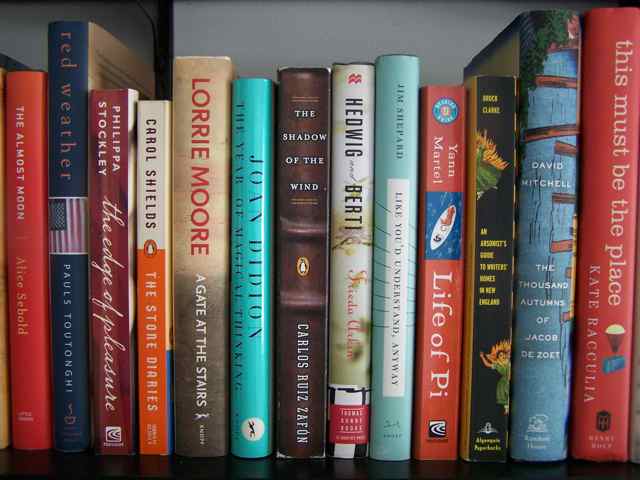
by Donna Leon
(Grove Atlantic, 2012)
One of the book club discussion questions we didn’t get to when we met using Zoom to talk about Death at La Fenice by Donna Leon last week, was what did reading the book make you hungry for. The book is set in Venice, Italy. One thing I learned right away from the book was how passionate detective Guido Brunetti is about his city as compared to Naples or Florence, say. Just as Italians might think of Americans as a single entity, while we consider ourselves Bostonians, New Yorkers, or Angelenos, residents of Venice are proud Venetians, with their own extensive history, corrupt politics, and codes of honor to be proud of or chagrined at.
The Guido Brunetti mystery series by Donna Leon, of which this is the first, is often mentioned as one that readers who like Louise Penny’s Armand Gamache (of the Quebec Surete) might like, so I’m glad to have finally gotten around to Death at La Fenice, which was originally published in 1992.
In this short YouTube video, author Donna Leon explains that although the series has been going for 25 years, readers (any who aren’t obsessive like me, that is) can jump in at any point in the series, because she doesn’t have her characters age over the course of the books beyond a few years.
Like Louise Penny’s Armand Gamache, Guido Brunetti is a happily married man with two nice children. Unlike the Gamache books, which should be read in order, the mysteries Brunetti solves in each book change, but the stories don’t build upon each other from book to book, and the setting doesn’t change from his beloved city of Venice.
Aside from similarities in the main characters — Brunetti and Gamache are both intelligent, handsome, conscientious, fundamentally decent and kind men who are extremely good at their work – readers who enjoy Louise Penny might also enjoy Donna Leon for the cultural and historical references; the literary quality of the writing; and the main characters’ leftward leaning tendencies, politically and philosophically. Also, both authors seem more interested in their characters and their interactions with each other than in setting up a puzzle for mystery readers to solve.
Foodies will find more descriptions of meals to drool over in Louise Penny’s books than in Donna Leon’s. At least going by Death at La Fenice. In this first book of the series, at least, readers hear more about what people are drinking rather than eating, and Brunetti never popped into a cozy village bistro or came home to a plate of fresh brownies as Gamache might.
Read the opening of Death at La Fenice by Donna Leon.
Brunetti does take a journalist out to lunch at a nice restaurant to get background on a suspect. Author Donna Leon seemed to get a kick out of describing the imperious waitress and the haughty atmosphere of the Italian dining experience.
Padovini was waiting inside the restaurant when Brunetti got there. The journalist stood between the bar and the glass case filled with various antipasti: periwinkles, cuttlefish, shrimp. They shook hands briefly and were shown to their table by Signora Antonia, the Junoesque waitress who reigned supreme here. Once seated, they delayed the discussion of crime and gossip while they consulted with Signora Antonia about lunch. Though a written menu did exist, few regular clients ever bothered with it; most had never seen it. The day’s selections and specialties were listed in Antonia’s head. She quickly ran through the list, though Brunetti knew that this was the merest of formalities. She quickly decided that what they wanted to eat was the antipasto di mare, the risotto with shrimp, and the grilled branzino, which she assured them had come fresh that morning from the fish market. Padovani asked if he might possibly, if the signora advised it, have a green salad as well. She gave his request the attention it deserved, assented, and said they wanted a bottle of the house white wine, which she went to get.
from Death at La Fenice by Donna Leon
______________________________________________
Coincidentally, my husband made seafood risotto last week, so I ate risotto the night before I read the above passage and had leftovers for lunch on the day of our (virtual) book club meeting.
He used the recipe for Seafood Risotto in the America’s Test Kitchen The Complete Mediterranean Cookbook, but because we’re doing pantry cooking these days, he substituted chicken for scallops, which we didn’t have. (We also didn’t have bottled clam juice, so he probably substituted extra chicken broth or water.)

If you’re a subscriber to America’s Test Kitchen, you can check out the recipe on their website, which calls for squid instead of scallops!
If not, this recipe from Epicurious seems pretty similar.
The one thing everyone knows about risotto is that it takes a lot of standing at the stove constantly stirring to make it correctly. I tried a slow cooker risotto recipe once, and don’t recommend it, but America’s Test Kitchen does have a recipe for Slow Cooker Seafood Risotto which might work better than whatever recipe I tried.


The photographs may not convey it, but the risotto was delicious!
Happy Weekend Cooking!

Shared to Weekend Cooking, hosted by Marg @ The Intrepid Reader.


